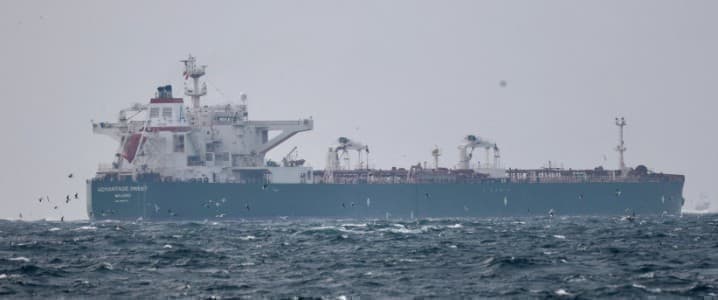
The Trump Administration has escalated its campaign against the Iranian regime, announcing new sanctions targeting over 30 tankers, entities, and individuals. This move, part of Trump’s “maximum pressure” strategy, comes just weeks after a significant strike on Tehran’s nuclear facilities. The sanctions aim to cripple Iran’s shadow fleet, with no sign of relief for Tehran unless it returns to the negotiating table, as emphasized by President Trump and his advisors.
U.S. Treasury Secretary Scott Bessent underscored the administration’s stance, stating, “As President Trump has made clear, Iran’s behavior has left it decimated.” He further noted, “Treasury will continue to target Tehran’s revenue sources and intensify economic pressure to disrupt the regime’s access to the financial resources that fuel its destabilizing activities.”
OFAC’s Targeted Sanctions and Their Implications
On Thursday, the U.S. Office of Foreign Assets Control (OFAC) revealed that the targeted networks facilitate the movement of “billions of dollars” worth of Iranian oil. Among those designated are companies associated with UK and Iraqi national Salim Ahmed Said, accused of selling Iranian oil falsely declared as Iraqi oil since at least 2020. These operations involve blending Iranian oil with Iraqi crude and marketing it as Iraqi or Emirati oil.
A notable target is the VS Oil Terminal at Iraq’s Khor Al Zubair Port, owned by Said, featuring six oil tanks. OFAC also pointed to ship-to-ship transfers near this terminal. According to Lloyd’s List, forged documents and manipulated data are routinely used to disguise the origin of Iranian oil.
Other designations include UAE-based VS Tankers FZE, the Marshall Islands-flagged VLCC Dijilah, and 11 additional tankers involved in Iranian oil and LPG shipments.
Impact on Iraq and Regional Dynamics
The implications for Iraq are profound, as Baghdad seeks to attract deeper investment and cooperation from Western nations. The involvement of Iraqi-linked operators in these sanctions could deter international oil, gas, and port investments. Additionally, Baghdad’s need for natural gas is growing, complicating its energy strategy.
This development follows the broader U.S.-Israeli conflict with Iran and Washington’s efforts to diminish Iranian influence in Iraq, adding to the region’s political and economic instability. While Iran’s grip in Iraq has weakened, pro-Iranian Shi’a militias remain active, contributing to ongoing tensions.
Internal Iraqi Challenges
Internally, Baghdad is embroiled in a dispute with the Kurdish Regional Government (KRG) over oil contracts and revenue-sharing. Kurdish media report increasing instability, with drone strikes hitting Kurdish cities and airports in Garminyan, Duhok, Erbil, and Kirkuk—many occurring after U.S. and Israeli strikes on Iran. Kurdish forces have confirmed drone attacks since early June.
Strategic Implications and Future Outlook
Washington’s involvement in the Iran-Iraq dynamic is deepening. Trump’s strategy appears to be twofold: pressure Tehran to negotiate and draw Iraq closer to the Western sphere, countering the growing regional roles of China and Russia. However, the effectiveness of these sanctions remains in question.
Despite the increased pressure, Iran has managed to boost its crude and gas output, with oil exports to Asia continuing. Trump’s approach, which includes allowing Chinese and Indian imports of Iranian crude, sends mixed signals. More stringent measures targeting buyers, rather than just Tehran’s networks, could potentially be more effective in curbing Iran’s oil trade.
For now, the shadow fleet sails on, maintaining a lifeline for Iran amidst international pressure.
The coming months will reveal whether these sanctions can achieve their intended goals or if Iran will continue to find ways to circumvent them. The geopolitical landscape in the region remains volatile, with potential shifts in alliances and economic strategies on the horizon.







